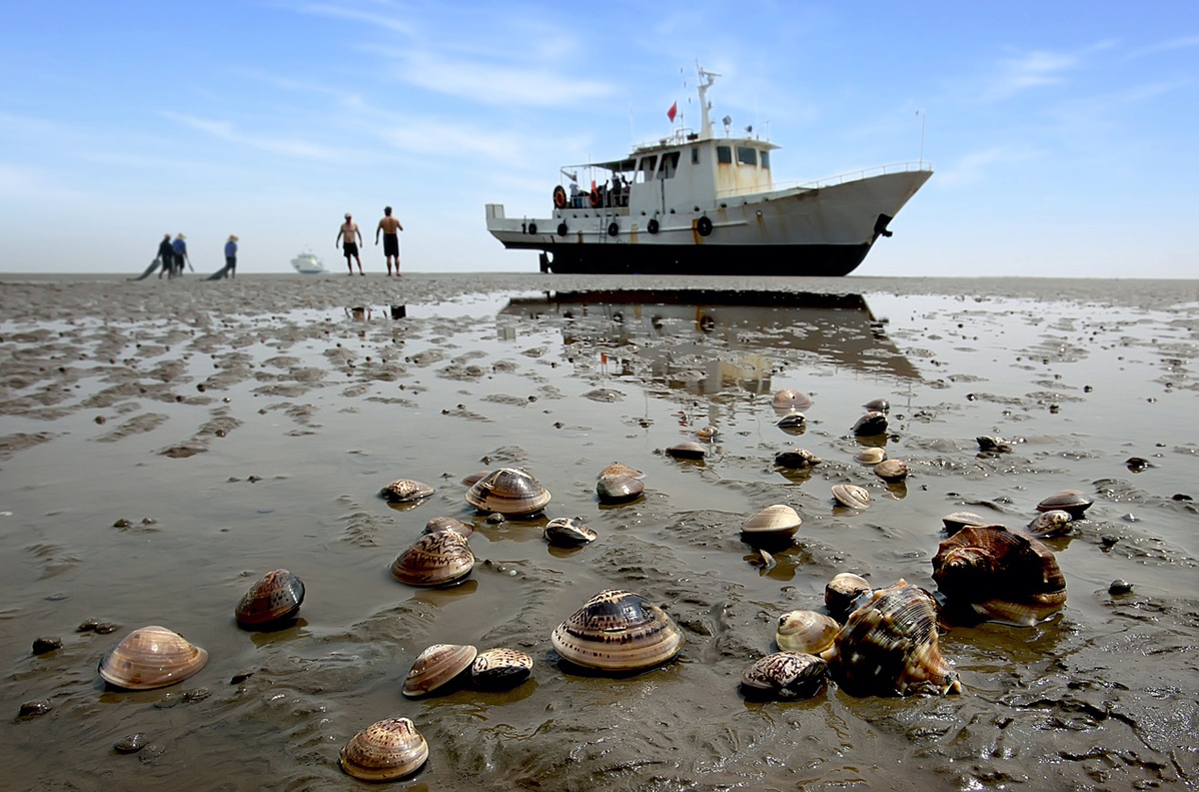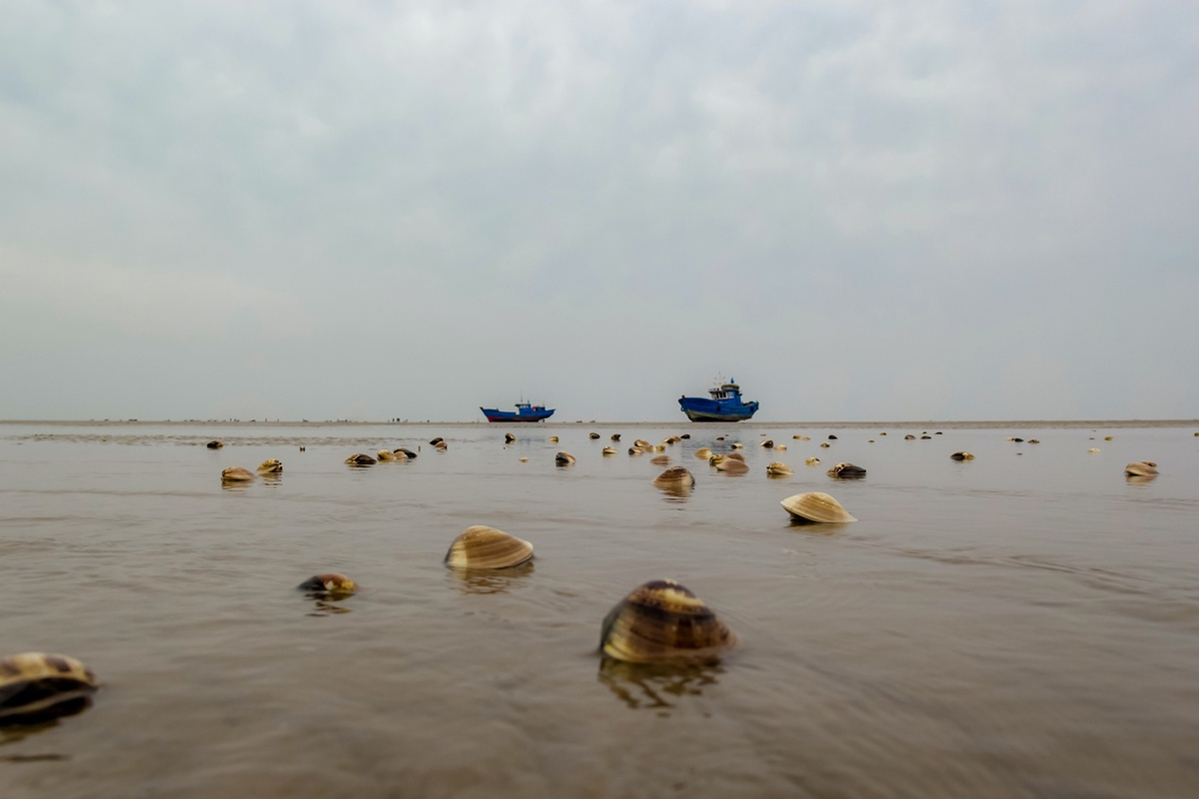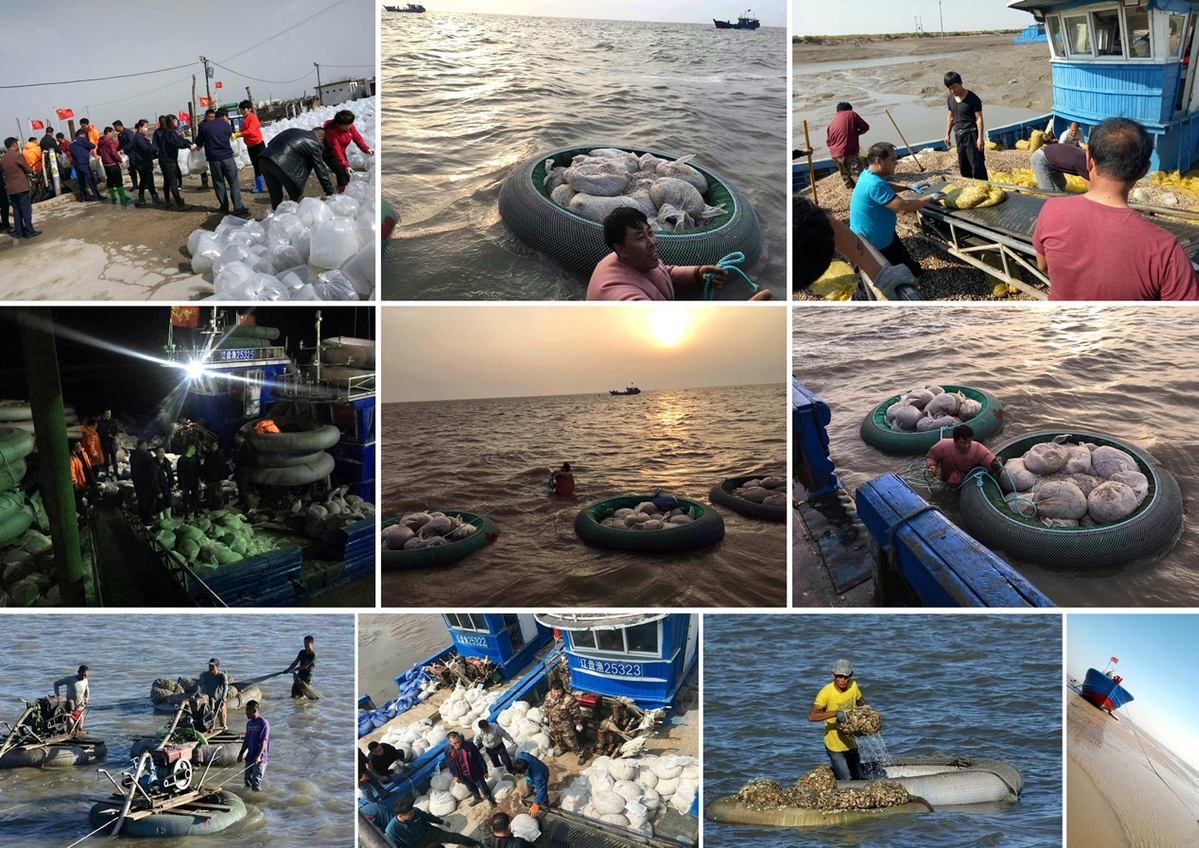In the northern part of Liaodong Bay, between the estuaries of the Daliao River and the Liaohe River, the sediment subsidence downstream formed a 12,000-hectare offshore sandbar, which was hidden at high tide and appeared at low tide. It is famous for its rich tidal flat shellfish, hence the name Clam Hill.

The tidal flat of Clam Gang has an area of 150,000 mu. There are white clams, green clams, big bamboo clams, mud snails, conchs, etc., as well as the sea black pearl - clams known as "the best freshness in the world".

The clam post is located in the northernmost part of the Chinese sea area. Due to the special sea area location and the tidal flat substrate, the clams that reproduce and grow have large shells, thick shells and fresh meat, which have always been favored by domestic and foreign markets, and thus known as the "Golden Beach in the Bohai Sea". It is the largest natural clam breeding ground in the world. When Emperor Qianlong of the Dynasty tasted the clams, he couldn't help but praised them, and immediately dubbed them "the best freshman in the world".

Since 2010, the Panjin Municipal Government has implemented strict management, closed post breeding, and adopted measures such as proliferation and release based on biological capacity assessment and scientific harvesting, which greatly improved the quality and quantity of shellfish.

By the first half of 2020, Panjin has invested a total of 3,200 tons of clam seedlings with 1.52 billion seeds; 10,000 tons of four-cornered clam seedlings with 2 billion seeds; 200 tons of green clam seedlings with 400 million seeds; and 300 million tubes of big bamboo clams seedlings. At present, the total biological reserve of shellfish in Gangshang is more than 100,000 tons, and the annual harvest of economic shellfish is about 5,000 tons.
(China Daily Liaoning Reporter Station)